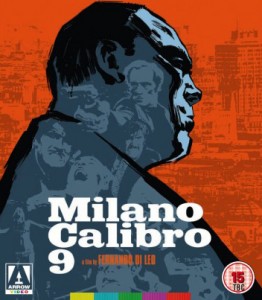 It’s time to enter the gritty criminal underworld of Italian cinema courtesy of one of its principal innovators Fernando Di Leo. This is a time when men were rugged and ruthless, cops snapped at their heels like savage dogs and women were just as deadly, it’s a time when everyone is a complete and utter bastard! This sub-genre of movies were mainly prolific for a decade or so from the late 60’s and gained the tag of Poliziotteschi films and although the police are principle to the plot it is the criminals that often take centre stage in the action. They are a lot different from the American likes of Clint Eastwood and his Dirty Harry movies and a lot of other dramas coming from America as they are very much set around the political turmoil in Italy at the time and a period of great unrest due to the fact that there is a huge disproportion between the wealthy and the working man (sound familiar)? It’s a time of desperate criminality and left wing social agitation and Anarchism which is one of the themes that spills over into films such as Milano Calibro 9 and many other’s within this interesting series of movies. It certainly is a different world from shite like modern day gangster fare we get in populist cinema today by the likes of Guy Ritchie, for a start men were men and not Danny (wanker) Dyer!
It’s time to enter the gritty criminal underworld of Italian cinema courtesy of one of its principal innovators Fernando Di Leo. This is a time when men were rugged and ruthless, cops snapped at their heels like savage dogs and women were just as deadly, it’s a time when everyone is a complete and utter bastard! This sub-genre of movies were mainly prolific for a decade or so from the late 60’s and gained the tag of Poliziotteschi films and although the police are principle to the plot it is the criminals that often take centre stage in the action. They are a lot different from the American likes of Clint Eastwood and his Dirty Harry movies and a lot of other dramas coming from America as they are very much set around the political turmoil in Italy at the time and a period of great unrest due to the fact that there is a huge disproportion between the wealthy and the working man (sound familiar)? It’s a time of desperate criminality and left wing social agitation and Anarchism which is one of the themes that spills over into films such as Milano Calibro 9 and many other’s within this interesting series of movies. It certainly is a different world from shite like modern day gangster fare we get in populist cinema today by the likes of Guy Ritchie, for a start men were men and not Danny (wanker) Dyer!
I had only managed to catch a couple of Fernando Di Leo films in the past, this (although I didn’t realise so until 20 mins or so in) and his even more obscure 1980 flick Madness. He directed 23 films although he wrote many more and Milano Calibro 9 (1972) was his seventh. It actually formed the first part of what became his Milieu Trilogy followed up by Manhunt in 72 and The Boss in 73. I have not had the chance to see these although all three films along with Rulers Of The City (1976) are available on USA label Raro Video making up the Fernando Di Leo Crime Collection; hopefully Arrow will continue what they have started here and bring these out in the UK too.
The premise of Milano Calibro 9 at first seems quite simple. During a drop off, a package changes hands surreptitiously a number of times before getting to its target. On opening it what is meant to be $300,000 turns out to be blank paper (that old chestnut). Those involved in the donkey work are rounded up by the gangsters, beaten, thrown in a cave above a quarry, strapped up with dynamite and boom! This is all before the opening credits too I should add. Ruthlessness is quickly established but that is not all that should capture your attention but the fluid style of the film and camerawork also are illustrated perfectly in these opening scenes and it’s obvious Di Leo has a roving eye and sense of setting things up perfectly rather than just focusing on the action. Also incredibly notable is the fantastic score that follows, running the length of these scenes and really heightening the drama. Luis Bacalov like Morricone is well known from his work on the spaghetti Western having scored Django and Bullet For The General but here he plays a major ace collaborating with Italian Prog Rock band Ossana. Although musically orthodox at first the main theme here, which is full of drama suddenly flourishes into pompous hard prog complete with bursts of flute and really has a giddy and delirious effect that catches you completely off guard. It’s highly worth appreciation in its own right.
Three years later Ugo Piazza (Gastone Moschin) is released from jail. He ended up there after a bungled robbery which took place just after preceding events and the mob think that he was responsible for their missing mullah too. He is hounded from the second he gets out by a trio of hoods led by Rocco (Mario Adorf) who beat, rob and smash up everything in the halfway house Ugo is left in. The film excels here courtesy of two excellent central performances Ugo is bullet headed, calm, controlled and a strong and silent type compared to the over the top spiv that is Rocco, who is fast talking, quick with fists and flamboyant in every respect coming across as much like a used car salesman / game show host as anything else. There is a sinister figure of The Americano who keeps being mentioned too and it is him in charge of the mob who wants his money back. When we, along with Ugo, who has to eventually meet him see The Americano, well the shock is certainly there for anyone who lived through bad 70’s TV as he is played by none other than Lionel Stander well known as loveable sidekick Max in Hart To Hart!
Ugo joins the mob again as they want to keep him close, convinced that he will eventually lead them to the money. He reacquaints himself with girlfriend dancer Nelly (played by prolific Eurobabe Barbara Bouchet) and things really begin to unfold. A lot of the aforementioned politics come into play and the police detectives who are part of the film spend most of their time arguing about repression among the rich and poor and scoring points off each other pretty much making everything they are trying to achieve to stop gang lawlessness redundant. Saying any more would ruin things but there’s lots of fast talking, fast driving, fast smoking, fast shooting as well as double crosses, triple crosses and even probably an inverted cross somewhere amidst it all to keep you entertained over the films uncut 101 minute running time.
Despite having seen this a year or two ago on a seemingly vanished bootleg disc my enjoyment was not curtailed in the slightest and the $300,000 question of what had happened to the money kept me entertained all over again. The Poliziotteschi / Crime Slime genre of films only seems to be becoming popular again recently and there are a huge wealth of films out there for rediscovery and appraisal. From what I have found watching them is rather addictive and I have not seen a duff example yet. I guess Milano Calibro 9 would be a perfect starting point as it is a bit of a classic and if you don’t like it you can always piss off back to watching Mr Dyer instead! One observation that did come to me while watching this again is that I could easily see a remake of it. Not by the bloody Americans but the Japanese as it would conventionally be perfect plot wise for a Yakuza version, perhaps by Takashi Miike.
Right, what have the extras got in store for us here? Well first up we have a 2004 making of documentary with the director (who died in late 2003) and others involved in the film. Di Leo gives us insight into its origins talking about the script written by Italian noir writer Giorgio Scerbanenco who we are told had books that sold more than Fleming’s Bond series at one point. Producers and film editor talk about the violence in the film and apparently the censors although loving it found it too hard to handle in its original form meaning that the finale was cut to what we have here. Surprisingly as I write this it looks like it has been awarded a 15 certificate by the BBFC; times have definitely changed since the film was made. Barbara Bouchet’s beaded bikini apparently caused quite a stir at the time and the actress looking great still and all rather glamorous remembers her time on the film well. Soundtrack artist Bacalov gets a brief look in and mentions he was hired as the director liked his work with another Italian prog rock band New Trolls who he had worked with on Maurizio Lucidi’s The Designated Victim (1971).Trolls, Goblin there must have really been something in the water. If like me you are fairly new to Di Leo’s oeuvre no doubt the 40 minute genesis of the genre piece charting his career will be an invaluable insight into his work and life. I for a start had no idea he wrote scripts (uncredited) for the likes of high profile Westerns such as a Fistful Of Dollars and sequel For A Few Dollars More as well as Fulci’s brutal Massacre Time. Di Leo, various actors and associates involved in his films have lots of different topics of conversation to make this suitably enthralling. There’s also plenty of stills and clips from his films which made me hungry to see more.
More learning up next with ‘Scerbanenco Noir’ a 26 minute crash course all about the author who penned the film and many more edgy crime novels. He was actually born in Russia although emigrated to Rome later in life as his mother was Italian. Naturally as he died in 1969 it is down to other Italian writers to sing his praises, one citing that he was the most important one to write about “the modernisation process Italy went through in the sixties” and the realism and violence of it all after the economic boom. His raw and visceral writing style is said to be much more direct than many other writers in places such as the USA and obviously living and breathing the air of Milan he managed to stylize the city as he saw it, warts and all. Apparently he also used around 32 aliases so good luck to anyone looking to try and start collecting his works which took in many genres apart from noir. There’s a very short audio phone interview with lead Gastone Moschin following this and finally feature wise ‘Italia Violenta’ an insight into the film by writer and actor Matthew Holness. With an Italian and US trailer, booklet and reversible sleeve art to finish the package off there’s plenty to digest as ever on this release. Hopefully there will be more of the sub-genre and films from Di Leo to come in the future. Until then you can cop Milano Calibro 9 from the link below.
Pete Woods
http://www.arrowfilms.co.uk/shop/index.php?route=product/product&product_id=350


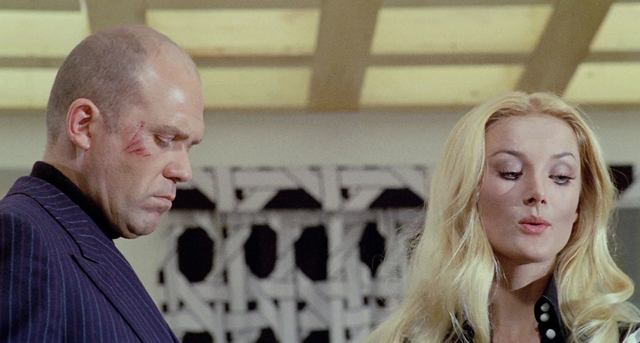
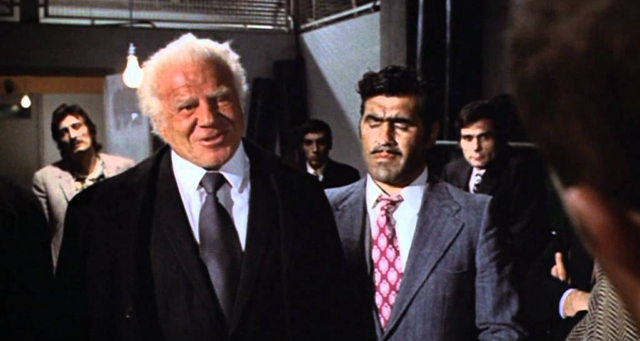
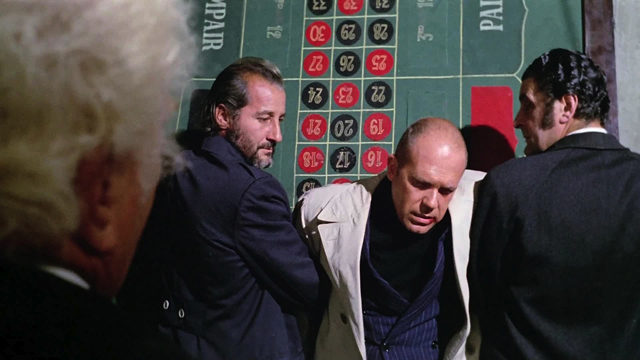
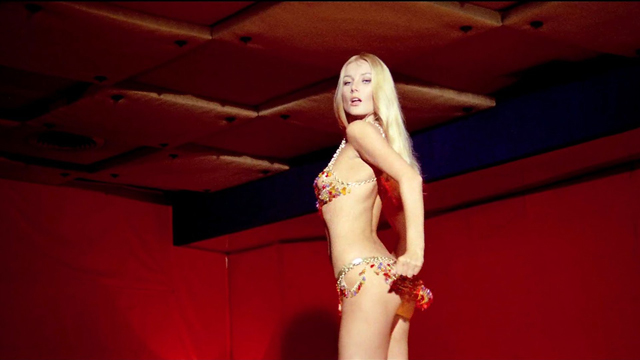
Leave a Reply